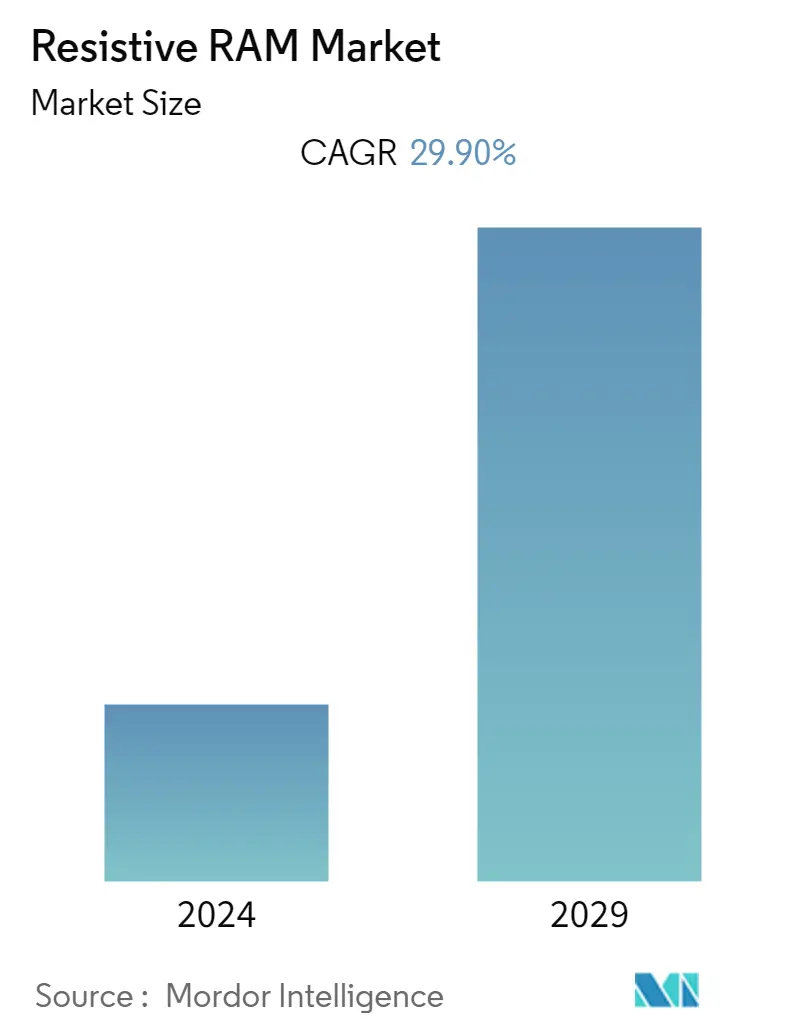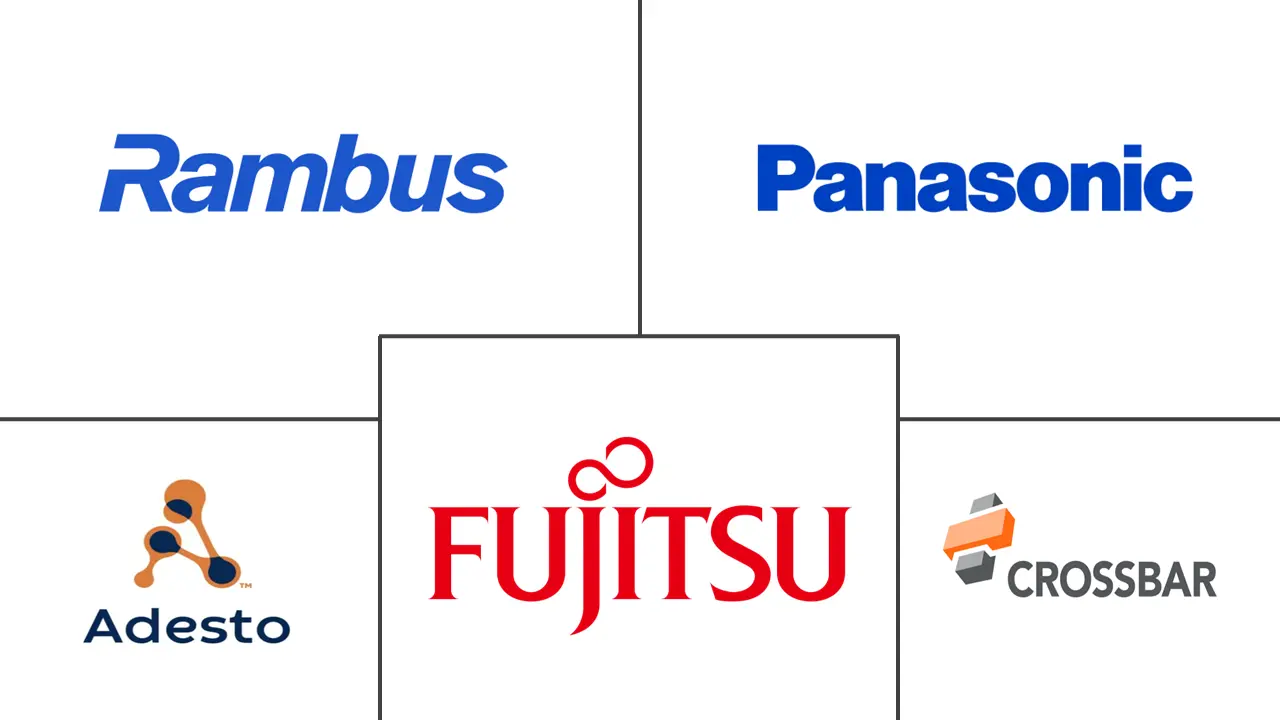Market Size of Resistive RAM Industry

| Study Period | 2019 - 2029 |
| Base Year For Estimation | 2023 |
| CAGR | 29.90 % |
| Fastest Growing Market | Asia Pacific |
| Largest Market | North America |
| Market Concentration | Medium |
Major Players
*Disclaimer: Major Players sorted in no particular order |
Need a report that reflects how COVID-19 has impacted this market and its growth?
Resistive Random Access Memory (RAM) Market Analysis
The Resistive RAM market is expected to register a CAGR of 29.9% over the forecast period. Resistive RAM, a non-volatile memory, is anticipated to seize a market share by substituting static random-access memory and dynamic random-access memory. The replacement will be possible due to numerous benefits given by resistive random-access memory, such as large storage density and 3D packing, allowing layers of memory gadgets to be coordinated and organized in one chip, fast switching for quick exchange of information, and using less energy per switching cycle. ReRAM also can replace flash memory used in mobile phones and other consumer electronics such as MP3 players.
- Further, the growing adoption of sensor technology, such as wearable and AI-enabled devices in various regions throughout the world, has boosted the demand for fast data transfers and high storage density, which in turn is providing a tremendous chance or possibility for the growth of the resistive random access memory market globally.
- Moreover, various multiple memory companies are investing in ReRAM technology. For instance, in April last year, CrossBar Inc., a non-volatile memory technology provider, announced new applications of its ReRAM technology for usage in secure storage and processing, where resistance to reverse engineering and physical attacks is an essential requirement of the system. The company's technology is now being offered for use in memory applications requiring higher levels of content security.
- Resistive random-access memory (ReRAM) is gaining traction as non-volatile memory (NVM) alternative, particularly in cloud and data center contexts where performance and energy efficiency are constantly improving. ReRAM technology has demonstrated lower read latency and quicker write version than flash memories while also achieving 64pJ/cell program energy, which is a 20% improvement over NAND, as the demand for data grows from users through premium services such as video streaming and from machines through the Internet of Things (IoT). In addition, the 3D vertical ReRAM arrays provide high-performance memory subsystems capable of replacing standard DRAM- or flash-based SSDs in data center environments, allowing faster data processing, storage, and retrieval in significantly smaller form factors with lower energy consumption.
- However, the soaring costs of resistive random-access memory and the complexity in various technological applications have become crucial challenges that can hinder the market's growth throughout the forecast period.
- Moreover, the COVID-19 pandemic is likely impeding the overall anticipated growth of the market, mainly attributed to the supply chain disruption, with several companies witnessing a scarcity of components like inductors and capacitors for manufacturing. But over the subsequent years, the innovation and implementation of new materials are expected to boost the demand for resistive random access memory in diverse verticals throughout the world.
